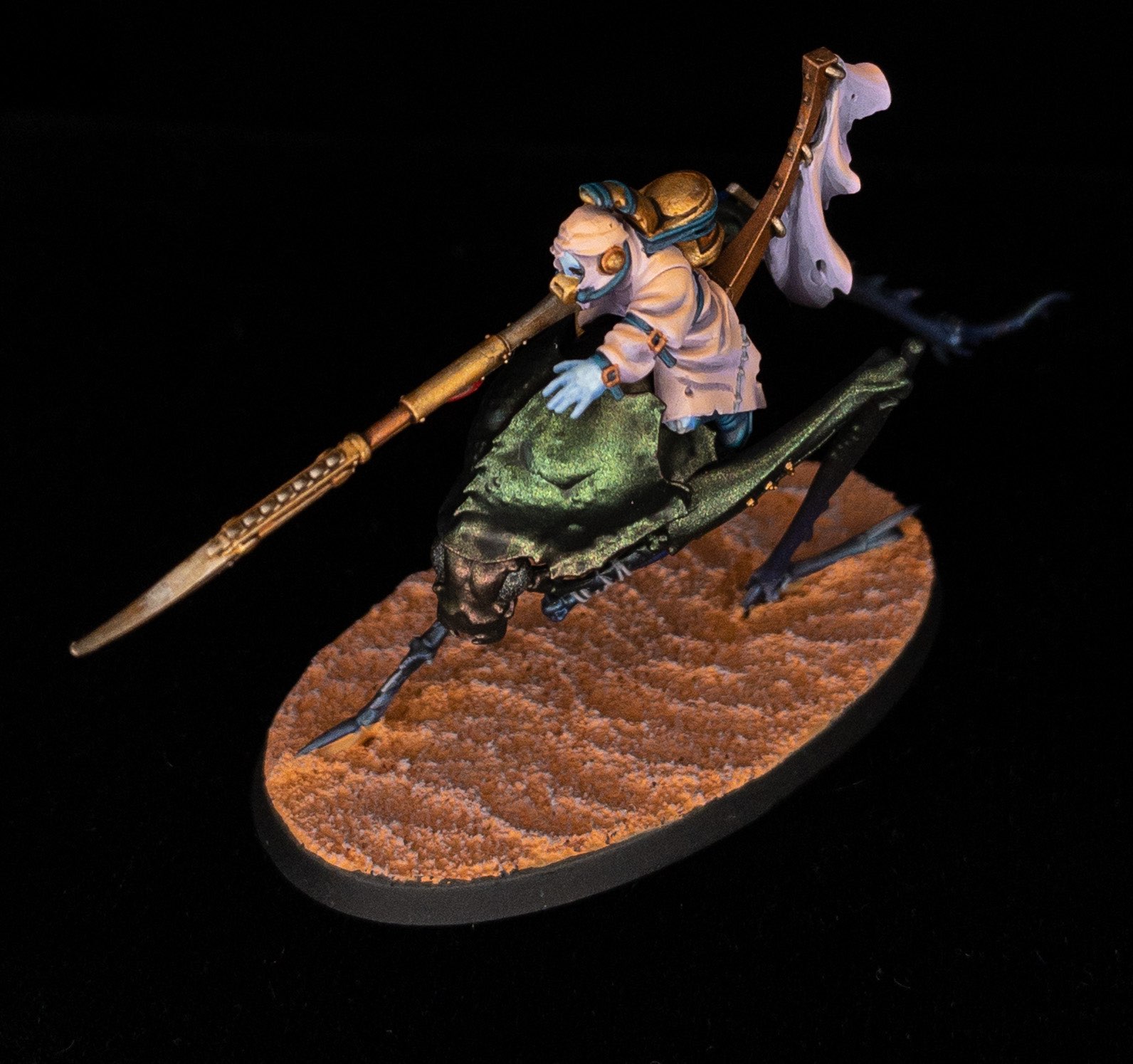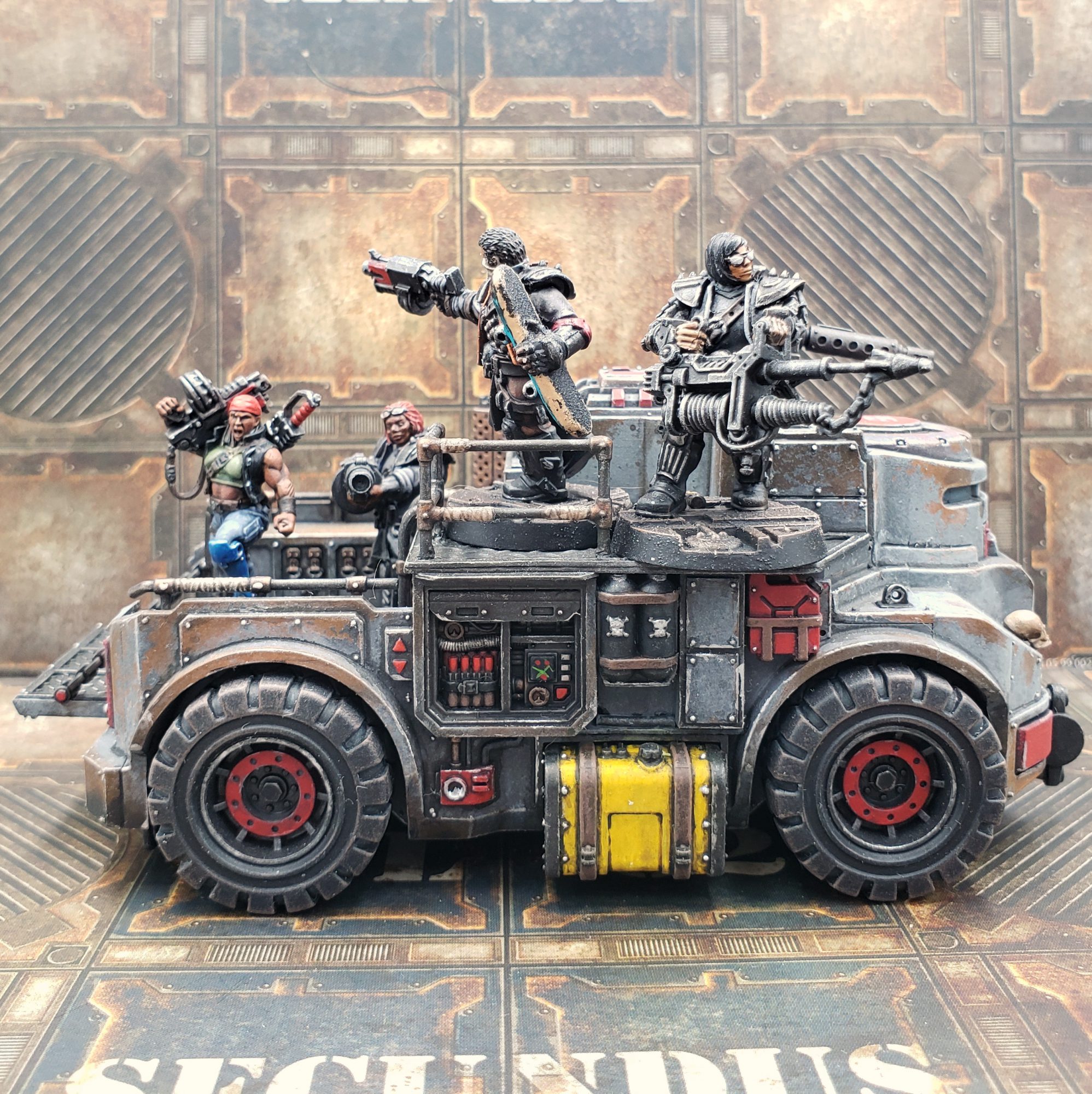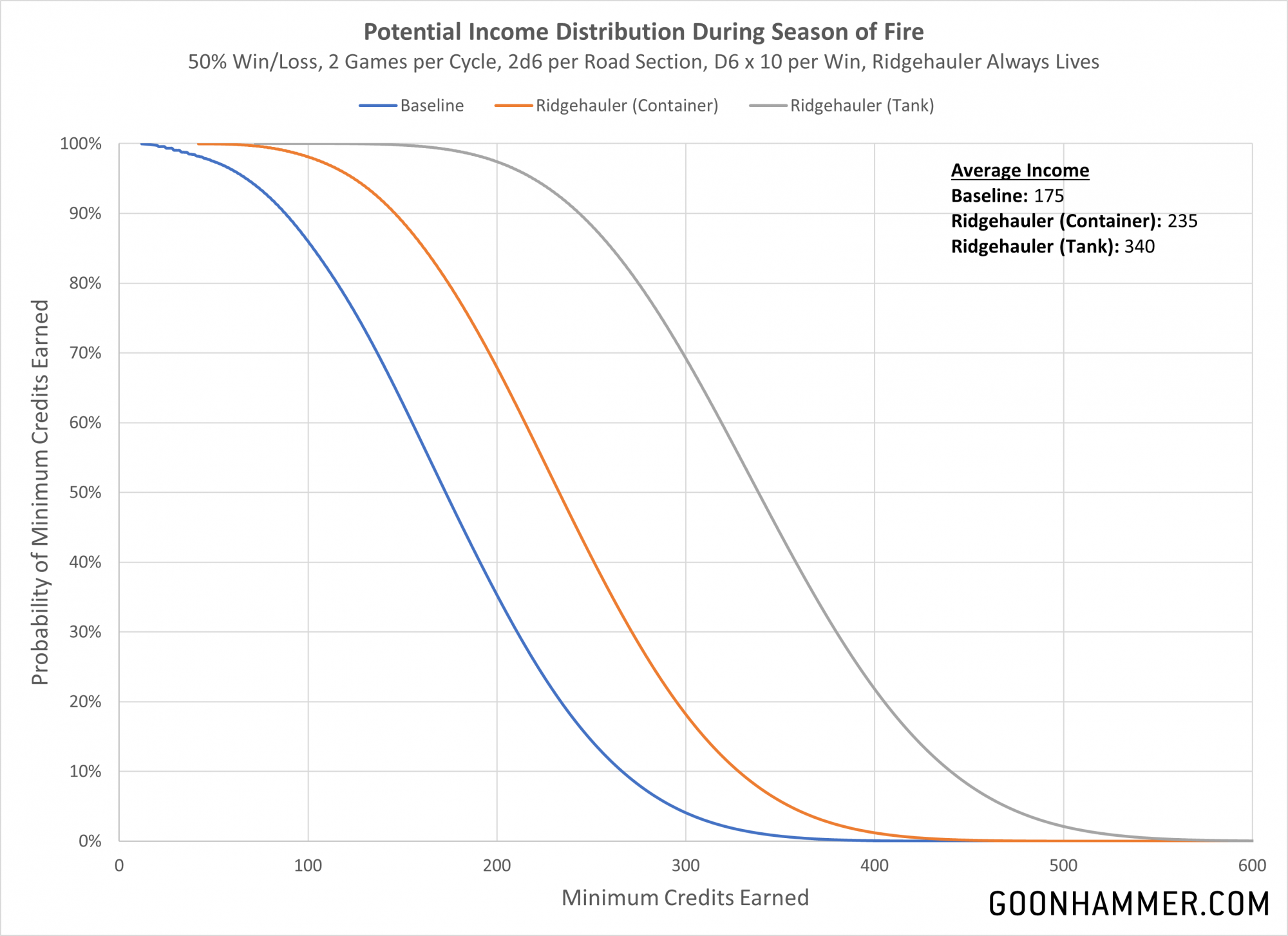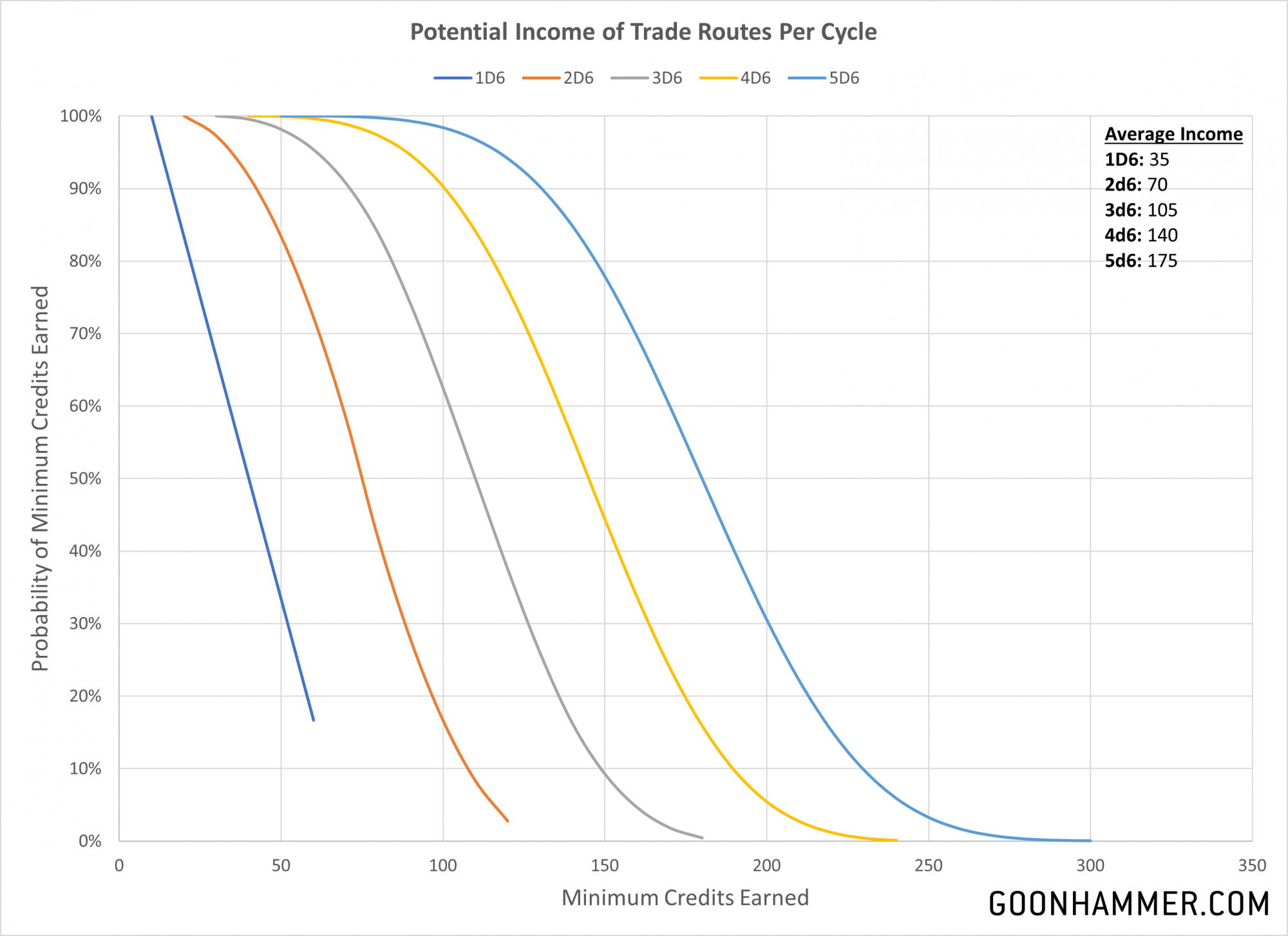In this week’s Hammer of Math Primaris Kevin steps outside in the hopes of touching grass, but only finds an irradiated ash-choked hellscape where making money usually comes at the expense of killing someone else.
With the Book of the Outlands finally complementing the Ash Wastes boxed set, we have everything we need to put together a campaign and finally start shooting each other from our respective bikes/quads/space rovers/ash rigs/custom hover pods. As you can imagine running a gang full of miscreants isn’t cheap, so how does a ganger who finally steps outside expect to make any money? Credits are critically important in Necromunda. They pay for new weapons and recruits, they cover your medical bills when someone has to find a Rogue Doc, and now they’re also needed to repair your vehicles when they take receive one too many holes. The difference between the top tier and bottom crust of a Necromunda campaign is often correlated to how much money the gangs have earned, and a lot of that is a function of victory. Winners make more money, which gives them more stuff, which means they can win more easily in the future. An Ash Wastes campaign is no different.
Campaign Funding
An Ash Waste campaign lasts seven cycles (weeks) and is divided into three phases. The Season of Flame lasts the first three cycles, Downtime is one cycle, and the Season of Ash is the remaining three cycles. Outside of Downtime (when everyone gets 250 credits to patch things up), the other cycles are for the acquisition of Road Sections which can allow players to form Trade Routes. Every player starts with two randomly generated Road Sections and earns more by issuing or facing challenges from other players and winning them. Each player is allowed to issue one challenge per cycle, which ideally means every player would get two games and two opportunities to get a Road Section.
Each Road Section is worth D6 to 3D6 credits which are earned at the beginning of every cycle. Where things get really interesting is when a player forms a Trade Route, which requires that they connect pairs of locations through any number of Road Sections that they control. The benefits depend on whether the gang is Law Abiding and gets a Trading Bonus, or is Outlaw and gets the Raiding bonus. As far as I can tell the bonus is applied every cycle. In addition to non-monetary benefits like a free Reputation or reducing the Rarity of Trading Post items, players can get free Gangers added to their roster, hire a Bounty Hunter or Hive Scum for free, or receive between D6 x 10 and 5D6 x 10 credits. When using the default map most of the connections are between 3 and 7 Road Sections long. The Trade Routes are also hilariously imbalanced. For example going from Light’s End to Cinderak City through Spider Mines only takes 3 Road Sections, but for an Outlaw gang it’s worth 7d6 x 10 credits every cycle (plus 8D6 credits for the Road Sections themselves). And if you happen to score that connection in the Season of Fire then it can’t be taken away until after Downtime. I suspect that’s going to be a very popular route.

Mission Funding
Another way to earn income in Ash Wastes games is through battles. The majority of battles are around D6 x 10 to the winner, although the vehicle ones with Rolling Roads are extremely profitable.
- Dust Bowl Skirmish: D6 x 10 to the winner or D3 x 10 to both in a tie
- Looters: D3 x 10 credits stolen from the Defender for every loot casket
- Fuel Hunt: D3 x 10 for each one of the 2d6 fuel points claimed by each gang
- Breakdown: D6 x 10 credits to the winner
- Wasteland Encounter: D3 x 10 credits to the winner or D3 x 5 credits to both in a tie
- Settlement Showdown: 2d6 x 10 to the winner, D3 x 10 if a drawing or losing gang claimed a building
- Settlement Raid: D6 x 10 credits to the winner, D3 x 10 for a draw, D3 x 5 to the loser
- The Beast: D3 x 10 to the winner
- Cargo Run: 4D6 x 10 to the winner
- The Bone Road Death Race: 4D6 x 10 to the winner

Rigged Investments
When the Book of the Outlands came out, GW also dropped the Cargo-8 Ridgehauler, and absurdly awesome bit of kit that I’m also convinced is one of the most obnoxiously overpowered options in the game. At 230 credits you get access to the toughest and best armored vehicle available that inexplicably also handles like a medium vehicle. If that wasn’t enough, for 50 credits you can add a munitorium armored container on top that provides two free 360 degree hardpoints, a never-ending Ammo cache, and every game the Ridgehauler survives gives you an extra D3 x 10 credits. Should you choose more risk you can replace the container with a promethium fuel tank to get an additional D6 x 10 credits (and you still get the D3 x 10). You can also add up to four additional trailers at 130 credits each (plus either the 30 credits for the tank or 50 for the armoured container). Assuming an average return of 75 credits that means a promethium tank trailer will pay for itself in about two games.
Skills to Pay Bills
The final potential source of income are two skills available to certain players. The first is Fixer, which is in the Savant list and earns the gang D3 x 10 credits after every battle if the fighter is not Captured or in Recovery; they don’t even have to have participated. The other two are from the Wisdom of the Ancients tree for Squats. The first is Where There’s Scrap, There’s Creds which gives the gang D6 x 10 credits for every enemy vehicle that’s wrecked. The other is There’s Always Another Secret which gives an additional D6 x 10 credits every time the fighter opens a Loot casket. The Squat ones are pretty situational, but I’ve used Fixer to great effect every time I’ve played a Lost Zone campaign.

Calculating Income
Let’s assume that this is a pretty evenly distributed campaign, with every player getting two weeks of gaming in. We’ll also assume a perfectly balanced campaign where every player has a 50% chance of winning any particular game. On average the road sections are worth 2d6 credits, and we’ll assume that the players are picking missions which average D6 x 10 credits to the winner and nothing to the loser. This means that every cycle the player has a chance to pick up a total of 2 Road Sections in addition to the income they earn per game. We’ll look over the first three cycles since it’s impossible for players to lose a Road Section during the Season of Flame.
Using a simple AnyDice program we can simulate the distribution of income assuming the player has the above conditions. Each of the “battle” functions in the code represents a week. If they win a game then they get the D6 x 10 prize for winning and the 2d6 revenue from the Road Sections for every week left. The code assumes three weeks of progress, meaning the payout you would get during Downtime (not including the 250 credits everyone gets). The chart below shows the predicted distribution of funds, along with what happens if you take a single Ridgehauler that manages to survive every mission. On average the gang receives 175 credits, while the presence of a Ridgehauler adds on average an additional 60 to 165 depending on what options are chosen and if it survives every match. Adding additional trailers would increase the average by a consistent result based on what was chosen.

While it’s not a perfect representation, it allows us to get at least a sense of how much a gang might expect to make over the course of three cycles assuming they had no Trade Routes. But since that’s an integral part of the campaign it’s important to explore what that means and how beneficial they can be. The chart below shows the potential income distribution of a Trade Route per cycle. The biggest thing that stands out is how valuable a route like Light’s End to Cinderak City is; 5d6 x 10 credits for a Raider if you can control the three Road Sections. Add an additional 70 credits per cycle if you go through Spider Mines and you can quickly see that Trade Routes can dominate income streams.

Wrapping Up
There’s a lot to the Ash Wastes campaign which makes this analysis less than perfect, but the bottom line is that the campaign has several very powerful effects which can be huge income sources. Trade Routes will certainly be something players aggressively fight over, either by challenging for valuable lines during the Season of Flames or by raiding and taking them over in the Season of Ash. As for the Ridgehauler, well it seems so good as to almost be mandatory.
Thanks for reading! If you have any questions or comments feel free to drop us a note in the Comments below or email us at contact@goonhammer.com. That’s also the best way to suggest topics for future articles.


